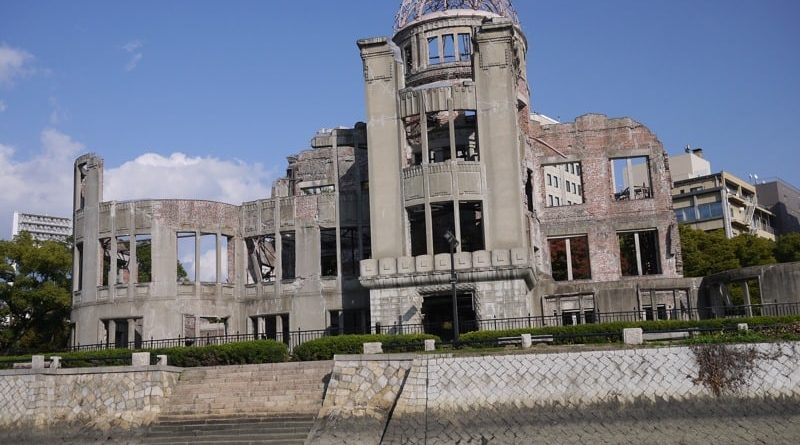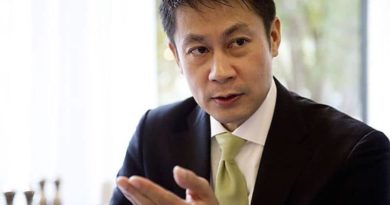A-bomb Dome
The A-bomb Dome (Genbaku dome 原爆ドーム)in Hiroshima is the iconic ruin of the Hiroshima Prefectural Industrial Promotion Hall. It has become a symbol of both the horror of nuclear war and the hope for peace. Designed by Czech architect, Jan Letzel, the building, originally named the Hiroshima Prefectural Commercial Exhibition Hall was completed and opened to the public in 1915.
It was an impressive building, unabashedly European in design, located in the middle of a bustling part of town on the banks of the Motoyasu River which was plied by pleasure boats. Located just a stone’s throw from the T-shaped Aioi Bridge (which served as the target for the pilots of the Enola Gay on August 6, 1945) the A-bomb exploded almost directly above the building. Even though all 30 people inside at the time were killed instantly when the bomb detonated, it is thought that this explains why the central section under the dome remained standing.
Many visitors are unaware that this structure was initially scheduled to be demolished with the rest of the ruins in the area during reconstruction of the city. These plans were delayed and Hiroshima was rebuilt around the dome. Opinions on what to do with site were divided with some locals wanting it torn down, while others wanted to preserve it as a memorial of the bombing.
In 1966, Hiroshima City officials were determined to preserve the A-bomb Dome indefinitely and solicited funds from within Japan and overseas. To date, the A-bomb Dome has undergone two preservation projects.
Despite opposition from China and the US, in December 1996 the A-Bomb Dome was registered on the UNESCO World Heritage List based on the Convention for the Protection of the World Cultural and Natural Heritage.
In the words of the Hiroshima City website, “As a historical witness that conveys the disaster of the first atomic bombing in history, and as a symbol of the vow to pursue the abolition of nuclear weapons and enduring peace”.
It is also a major tourist spot and it is not uncommon for the area around the building to be crowded with visitors from all over Japan and all around world snapping shots of the wangled iron frame and crumbling concrete, or smiling for pictures with it as a backdrop.
The atmosphere can sometimes be quite at odds with what the memorial symbolizes. You will also often find dedicated volunteer guides around the monument, many of them are survivors of the blast themselves (Hibakusha) who are keen to tell you about the bombing from their personal perspectives. It can be tough to listen to, but it is well worth taking the time.
The A-bomb Dome is also a focal point in the design of the Peace Memorial Park, lying directly on architect Kenzo Tange’s “Peace Line” which dissects the park, cutting directly though the cenotaph and peace flame, through to the center of the Peace Memorial Museum.
The ruin underwent extensive structural integrity checks and reinforcement work in 2020/21, at which time the steel arched rafters in the dome itself were repainted a color closer to which they had in the months after the bombing.
In the week before the 25th anniversary of the ruin as a UNESCO World Heritage Site, the Asahi Shinbun published a short video of footage taken from behind the fences which keep the general public a safe distance from the ruined building which includes a view looking up from directly below the dome.
The A-bomb dome is often used as a backdrop to (generally) quiet protests and vigils by peace and anti-nuclear activists. It is also the backdrop for the annual peace lantern floating ceremony when they are floated on the river in front of the dome. There are also open-air music concerts and the mid-winter river swim event held on the bank opposite.



